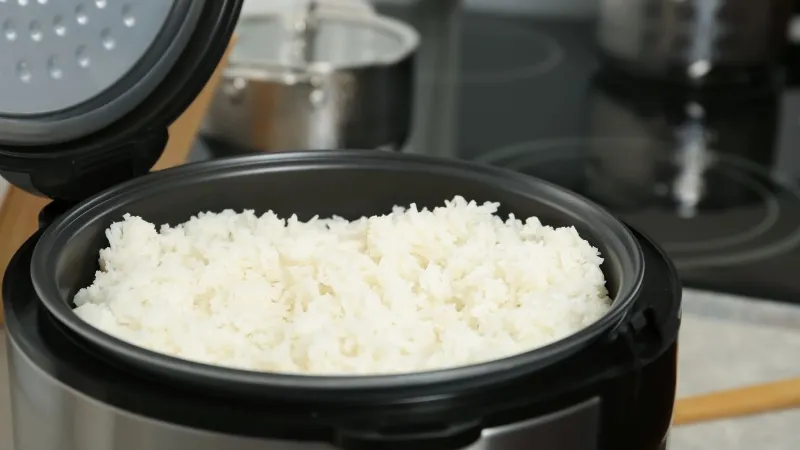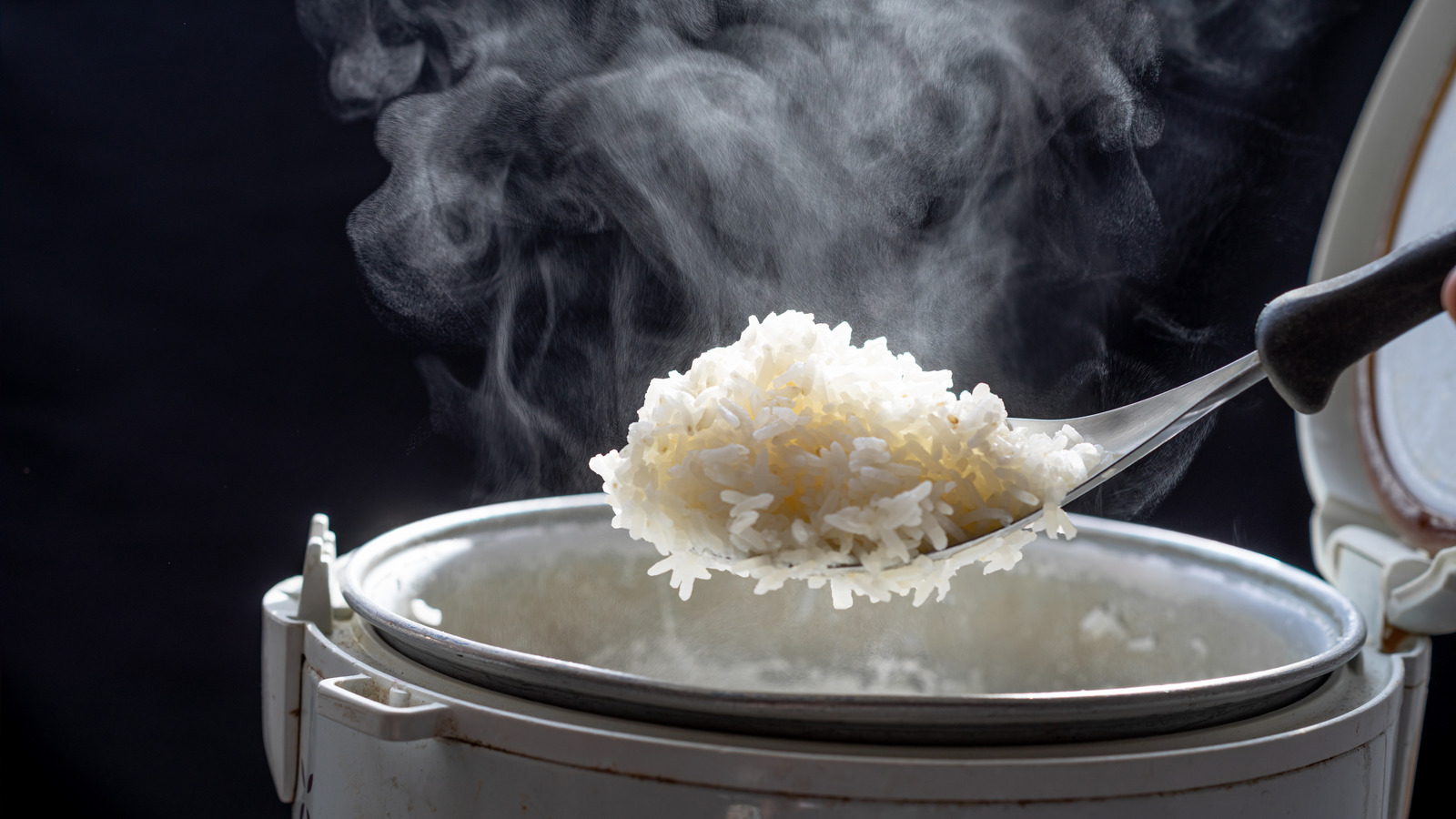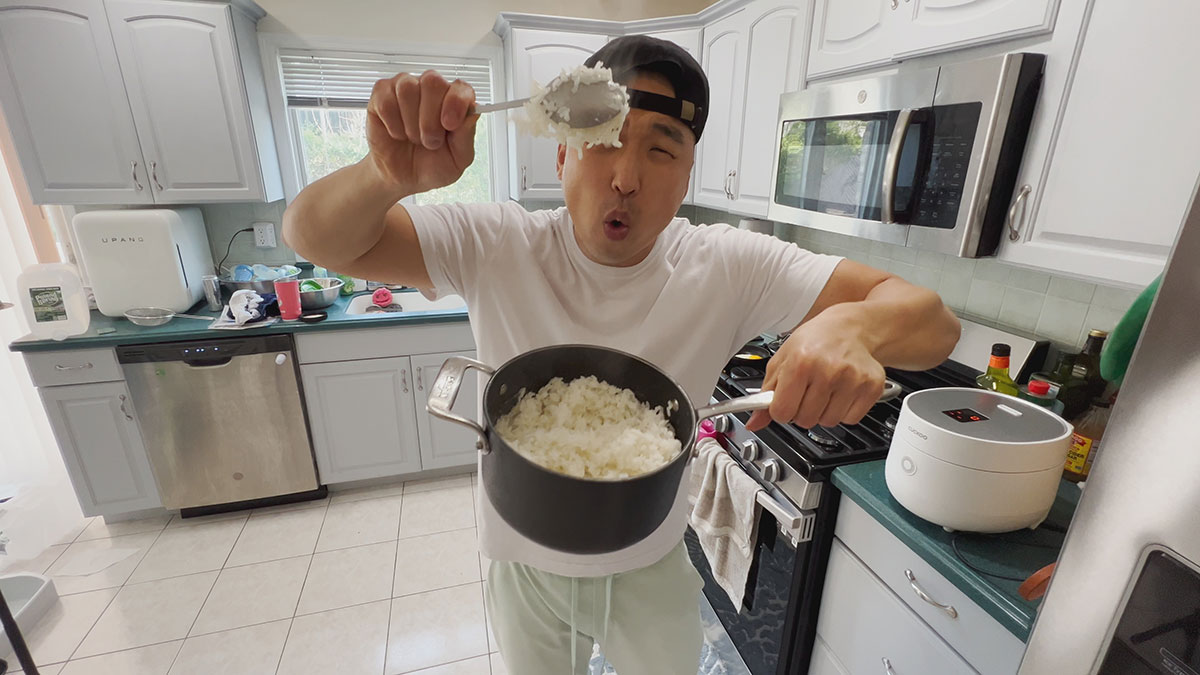Mastering the Art of Cooking Lap Cheong in a Rice Cooker
Written By James Morgan
Mastering the Art of Cooking Lap Cheong in a Rice Cooker
If you're on the hunt for how to cook lap cheong in a rice cooker, you've come to the right spot. This detailed guide will lead you through the step-by-step process of cooking the delightfully flavorful Chinese sausage known as Lap Cheong using a rice cooker. Whether youre a veteran chef or a beginner in the kitchen, this article will equip you with all the insights you need to perfect this dish.
:max_bytes(150000):strip_icc()/__opt__aboutcom__coeus__resources__content_migration__simply_recipes__uploads__2020__03__Rice-Cookers-LEAD-14-c55e0a43686f4428be2beb8e07079414.jpg)
What is Lap Cheong?
Lap Cheong, commonly referred to as Chinese sausage, is a unique type of cured sausage that has its roots in China. It usually boasts a sweet, robust flavor and firm texture, making it a delightful addition to various dishes. Generally made from pork, Lap Cheong is seasoned with soy sauce, rice wine, and an array of aromatic spices. This sausage offers a flavor range from sweet to slightly spicy, making it a versatile ingredient in many Asian-inspired recipes.

Why Use a Rice Cooker?
You might wonder, why use a rice cooker to cook Lap Cheong? The answer is simple: its convenient and practically foolproof. A rice cooker provides a controlled, consistent cooking environment, ensuring even cooking without any risk of burning. Plus, a rice cooker is a multifaceted appliance capable of handling various cooking tasks, making it a valuable addition to your kitchen.
Ingredients
- 2 to 3 pieces of Lap Cheong (Chinese sausage)
- 2 cups of Jasmine or short-grain rice
- 2 cups of water
- 1 tablespoon of soy sauce
- 1 teaspoon of vegetable oil
- Optional: 1 teaspoon of rice wine or Shaoxing wine

Step-by-Step Guide on How to Cook Lap Cheong in a Rice Cooker
Step 1: Preparation
First, gather all your ingredients and tools. A quality set of knives, like this knife set along with a durable cutting board, will be quite helpful. Start by washing the rice thoroughly in a bowl until the water runs clear, which is crucial for removing excess starch and preventing mushy rice.
Step 2: Preparing the Sausage
Lay the Lap Cheong on a cutting board and slice it into thin rounds or diagonal pieces using a sharp knife. You can choose to remove the casing or leave it on, depending on your preference. Set the sliced sausage pieces aside once done.
Step 3: Setting up the Rice Cooker
Pour the washed rice and water into the rice cooker. It's advisable to follow the rice-to-water ratio specified in your rice cooker's manual. For this recipe, we'll use 2 cups of water for 2 cups of rice. Add the soy sauce, vegetable oil, and the optional rice wine. Stir these ingredients to ensure even distribution.
Step 4: Adding the Lap Cheong
Distribute the sliced Lap Cheong evenly over the rice mixture. This allows the sausage to cook thoroughly and infuse its flavors into the rice.
Step 5: Cooking
Place the lid on the rice cooker and start the cooking cycle. Depending on your rice cooker's model, this process may take between 30 to 50 minutes. The rice cooker will automatically switch to the Keep Warm mode once cooking is done.
Step 6: Final Touches
Once the rice cooker shifts to the Keep Warm mode, let the rice and sausage sit for another 10 minutes to fully develop their flavors. Carefully open the lid and give everything a gentle stir with a rice paddle or large spoon, ensuring the sausage and rice are well-mixed for a consistent taste in every bite.

Serving Suggestions
Serve your perfectly cooked Lap Cheong and rice immediately. This dish pairs wonderfully with simple steamed vegetables, or you can go for a stir-fried vegetable medley to add more nutritional value and color to your plate. Additionally, a sprinkle of green onions or a touch of sesame oil can elevate the overall flavor and presentation.
Alternative Cooking Methods
Though a rice cooker is a convenient way to prepare Lap Cheong, exploring other cooking methods can also be rewarding. For variety, you might consider steaming or pan-frying the sausage. Steaming retains moisture and tenderness, while pan-frying renders some of the fat, resulting in a slightly crispy exterior.
Health Benefits
Including Lap Cheong in your diet can offer several health benefits when eaten in moderation. The sausage is high in protein, crucial for muscle repair and growth. It also contains essential nutrients like iron and B vitamins, which are vital for maintaining good health. However, due to its curing process, Lap Cheong can be high in sodium, so its best enjoyed in moderation, especially for those monitoring their salt intake.
Storing Leftovers
Should you have any leftovers, proper storage is key to maintaining freshness. Place the leftover Lap Cheong and rice in an airtight container and refrigerate. It will last up to 3 days. When ready to eat, reheat the leftovers in the microwave or on the stovetop until thoroughly warmed.
Cleaning and Maintenance
Proper cleaning and maintenance of your cookware will extend its lifespan. Clean the rice cooker pot with a gentle cookware cleaner to remove any residues and stains. For your cutting board, apply some cutting board oil to preserve the wood and keep it in optimal condition.
As an Amazon Associate, I earn from qualifying purchases.
Conclusion
In conclusion, mastering how to cook Lap Cheong in a rice cooker is a fantastic way to explore and savor this flavorful Chinese sausage. The rice cooker offers an easy and efficient cooking method, suitable for cooks of all skill levels. By following the detailed steps in this guide, you can create a delectable and satisfying dish that pairs beautifully with various sides. Don't forget to explore other cooking techniques and enjoy the versatility of Lap Cheong in your culinary journey.



